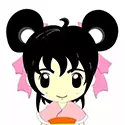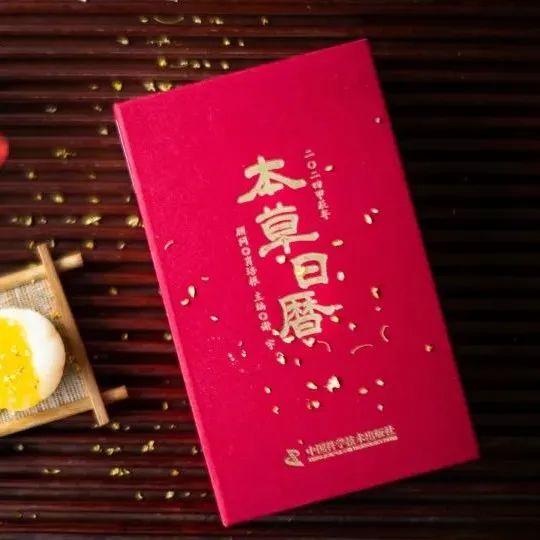
Editor: Xiao Yaotong
Is a cold a simple matter? Can you treat it?
▍Total of2210words, estimated reading time6minutes
 1. Exterior Pattern is the Early Stage of Exogenous Cold Evil
1. Exterior Pattern is the Early Stage of Exogenous Cold Evil
1. The characteristic of exterior pattern is aversion to cold
The concept of exterior pattern originates from the “Shang Han Lun” (Treatise on Cold Damage), where the Taiyang disease is classified as an exterior pattern.
The outline of Taiyang disease is stated in the first line: “In Taiyang disease, the pulse is floating, the head and neck are stiff and painful, and there is aversion to cold.”
The floating pulse, stiff and painful head and neck, and aversion to cold mentioned in the original text are common clinical manifestations of exterior patterns, but only “aversion to cold” is specific, meaning it is the characteristic manifestation of exterior patterns.
The floating pulse and stiff neck are also common in exterior patterns but are not specific to them; in other words, while these manifestations are common in exterior patterns, they are not exclusive to them.
Therefore, the key to determining whether it is an exterior pattern is the presence or absence of “aversion to cold”. It is said that “for every degree of aversion to cold, there must be a degree of exterior pattern.” It can also be understood that “only with a degree of aversion to cold can there be a degree of exterior pattern.” For example:
In Taiyang disease, the pulse is floating and rapid; floating indicates wind, rapid indicates heat, and movement indicates pain. Rapid indicates deficiency, with headache and fever, slight sweating, and if there is aversion to cold, the exterior has not resolved (134).
After a major purge in cold damage, if sweating recurs, with fullness below the heart, aversion to cold indicates the exterior has not resolved, and one should not attack the fullness but first resolve the exterior. Only after resolving the exterior can one attack the fullness; to resolve the exterior, Gui Zhi Tang (Cinnamon Twig Decoction) is appropriate; to attack the fullness, Da Huang Huang Lian Xie Xin Tang (Rhubarb and Coptis Decoction) is appropriate (164).
In Yangming disease, the pulse is slow; although sweating occurs, if there is no aversion to cold, the body must feel heavy, with shortness of breath, abdominal fullness, and wheezing. If there is tidal fever, one can attack the interior; if hands and feet sweat profusely, this indicates hardened stool, and Xiao Chengqi Tang (Minor Order the Qi Decoction) is the main treatment; if there is much sweating with slight fever and aversion to cold, the exterior has not resolved, and the heat is not tidal, one should not use Chengqi Tang (Order the Qi Decoction). If the abdomen is large and full and not passing, one can use Xiao Chengqi Tang to slightly harmonize the stomach qi, avoiding causing major diarrhea (208).
In Yangming disease, the pulse is slow, with much sweating, and slight aversion to cold indicates the exterior has not resolved, and one can induce sweating, Gui Zhi Tang is appropriate (234).
In Taiyang wind, with diarrhea and vomiting, only after the exterior resolves can one attack. If the person sweats profusely, has intermittent attacks, headache, fullness and hardness below the heart, pain in the hypochondrium, dry retching, and shortness of breath, if sweating occurs without aversion to cold, this indicates the exterior has resolved but the interior is not harmonized, and Shi Zao Tang (Ten Jujube Decoction) is the main treatment (152).
The above original text uses the presence or absence of “aversion to cold” as the basis for determining the existence of an exterior pattern.
2. The cause of exterior patterns is cold evil
The mechanism of “aversion to cold” is that cold evil invades the body, binding the defensive qi, preventing it from “warming the flesh and dividing the meat.” Cold evil has the nature of contraction and stagnation, which binds the body’s defensive qi, leading to the production of “aversion to cold.”
Among the causes of exogenous diseases, apart from cold evil, only damp evil can lead to aversion to cold, as damp evil is heavy and turbid, and can also obstruct the defensive qi.Other evils cannot lead to aversion to cold, especially heat evil cannot lead to aversion to cold.
The characteristic of “aversion to cold” is that the patient feels cold and is not relieved by adding clothing or heating. If the patient feels cold and adding clothing or heating relieves it, this is “fear of cold,” which is a manifestation of yang deficiency.
It is important to note that in the “Shang Han Lun,” Zhang Zhongjing does not distinguish between “aversion to cold” and “fear of cold,” referring to the cold sensation in the Si Ni Tang syndrome as “aversion to cold,” as in the 298th line: “In Shaoyin disease, with cold extremities, aversion to cold, curled body, pulse not palpable, not vexed but agitated, death.”
The “Shang Han Lun” also mentions “aversion to wind,” where the characteristic is that the patient feels cold when exposed to wind but does not feel cold when not exposed to wind. In TCM, this is described as “with wind, there is aversion; without wind, there is peace.” Although the patient feels cold only when exposed to wind, the characteristic of feeling cold when exposed to wind is the same as “aversion to cold,” meaning it is not relieved by adding clothing or heating.
Thus, “aversion to wind” is a milder form of “aversion to cold”, and for this reason, Zhang Zhongjing does not strictly differentiate between the two, as in the 12th line of Gui Zhi Tang syndrome, which states “slight aversion to cold, slight aversion to wind” together.
 2. The term “exterior” refers generally to superficial conditions
2. The term “exterior” refers generally to superficial conditions
The term “exterior” should generally refer to superficial disease locations, not to specific syndromes. It can include the “exterior pattern” of the early stage of exogenous cold evil, but it does not specifically refer to the “exterior pattern” of the early stage of exogenous cold evil.
 3. Confusion in textbook concepts
3. Confusion in textbook concepts
Differentiating exterior and interior patterns
Exterior and interior are two general principles for distinguishing the location of disease, whether external or internal, superficial or deep.
Exterior and interior are relative concepts, such as skin versus muscles and bones; skin belongs to the exterior, while muscles and bones belong to the interior; organs versus bowels; bowels belong to the exterior, while organs belong to the interior; meridians versus organs; meridians belong to the exterior, while organs belong to the interior; among the three yang meridians and three yin meridians, the three yang meridians belong to the exterior, while the three yin meridians belong to the interior, etc.
Generally speaking, the body’s skin and hair belong to the exterior, while blood vessels, bone marrow, and organs belong to the interior. However, in clinical differentiation, when an external evil invades the skin, and the disease location is superficial, it is called an exterior pattern; when the disease is in the organs, and the disease location is deep, it is called an interior pattern.
Exterior Pattern
Refers to the initial stage of invasion by the six evils, pestilence, etc., where the righteous qi resists the evil at the skin level, primarily manifested by new onset aversion to cold and fever.
Clinical manifestations: new onset aversion to wind and cold, or aversion to cold and fever, headache and body pain, sneezing, nasal congestion, runny nose, itchy and painful throat, slight cough, shortness of breath, pale red tongue, thin coating, floating pulse.
Interior Pattern
Refers to the disease location being internal, affecting the organs, qi, blood, and bone marrow, primarily manifested by symptoms of organ dysfunction.
Clinical manifestations: the range of interior patterns is extremely broad, with various manifestations. In general, any specific syndrome that is not an exterior pattern (or a half exterior and half interior pattern) generally falls under the category of interior patterns, known as “not exterior, then interior.” The characteristic manifestation is the absence of new onset aversion to cold and fever, with symptoms primarily related to the organs.
The above is the content of the differentiation between exterior and interior patterns from the “Textbook of TCM Diagnosis” published in August 2012 【1】.
Clearly, the textbook confuses the general term for superficial disease location “exterior” with the “exterior pattern” of the early stage of exogenous cold evil. In defining “exterior pattern,” it also expands the causes of exterior patterns from cold evil to all exogenous causes.
However, among the causes of exogenous diseases, apart from cold evil and damp evil, other pathogenic evils cannot bind the body’s defensive qi, cannot lead to aversion to cold, and cannot lead to exterior patterns.
 4. Exterior patterns can be renamed as the early stage of exogenous cold evil
4. Exterior patterns can be renamed as the early stage of exogenous cold evil
From the above, it can be seen that the concept of exterior patterns in TCM is not clear and can easily lead to confusion.
For naming the early stage of exogenous diseases, it can be named according to the cause, such as early stage of exogenous cold evil, early stage of exogenous heat evil, early stage of exogenous damp evil, early stage of exogenous dryness evil, etc., which would avoid confusion. More specific content can be referenced in my “Reconstruction of the Differentiation and Treatment System for Early Stage of Exogenous Diseases.”
References:
【1】Li Candong, Wu Chengyu: TCM Diagnosis, China Traditional Chinese Medicine Publishing House, 3rd edition, August 2012, pages 141-143.
【2】Xiao Xiangru, “Reconstruction of the Differentiation and Treatment System for Early Stage of Exogenous Diseases,” China Traditional Chinese Medicine Publishing House.

 Excellent Article Review
Excellent Article Review
Mycoplasma pneumonia is prevalent! 11 effective TCM clinical experience prescriptions! Benefits at the end of the article
2023-10-30

Amazing! “Herbal Calendar: 2024”, an unmissable feast of TCM culture
2023-10-08
 — THE END — ▍Copyright Statement:▶This article is authored by: Xiao Xiangru. The article source: Xiao Xiangru Channel. Cover image source: Baotu Network.
— THE END — ▍Copyright Statement:▶This article is authored by: Xiao Xiangru. The article source: Xiao Xiangru Channel. Cover image source: Baotu Network.
▶This platform aims to disseminate knowledge of TCM culture, and copyright belongs to the relevant rights holders. If there are any improper uses, please feel free to contact us for negotiation.▶This article involves prescriptions and medicines, please use under the guidance of a professional TCM practitioner.

 Share
Share Save
Save View
View Like
Like

